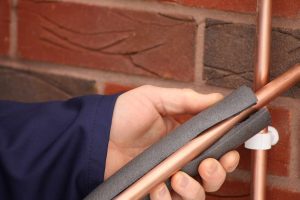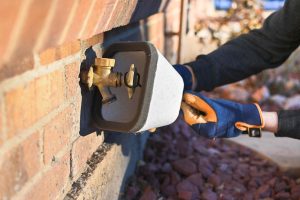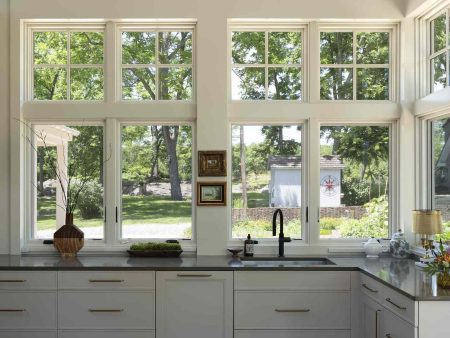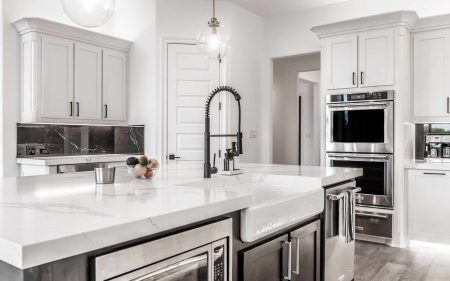Doing your own home repairs and remodels is a great way to save money and to take control of the process. Some repairs and remodels are well-known DIY favorites—painting the interior, laying plank flooring, replacing electrical outlets. A number of other projects might not seem DIY-friendly at first, but they actually are. Plus, there are other projects that might be just outside of your current comfort zone, which you might enjoy as a challenge or to learn new home improvement skills.
-
01
of 10Hang Drywall
Hanging drywall sheets, or wallboard, is a simple job that requires little more than a cordless drill or a hammer. Instead of paying workers to do this relatively straightforward job, you can do it by yourself or with the assistance of a partner. The second stage of mudding and sanding the drywall can be a bit tricky. So even if you do call in pros for this next step, you still will have saved money by hanging the drywall by yourself.
-
02
of 10Install PEX Pipe
If you have never installed plumbing pipe but have always been curious to do so, PEX pipe just might be your entry point to this fascinating trade. PEX pipe is a flexible plastic pipe that connects with push-fit fittings or with crimp rings. As with nearly every plumbing project, you will need to obtain a permit from your local authorities for new plumbing installs.
-
03
of 10Do Your Own Electrical Work
Many homeowners may not realize that they can work on their own electrical system, even for involved projects like completely wiring kitchens or bathrooms or running new circuits. Except for simple projects like replacing outlets or light switches, most electrical work does require an electrical permit. Some projects, like heavy-ups or installing new service panels, are best left in the hands of licensed electricians.
-
04
of 10Install Plank Flooring
Few other home projects are as friendly to a do-it-yourselfer as installing plank flooring. Plank flooring, in either vinyl or laminate form, connects side to side with fold-and-lock joinery. Because these are floating floors, they install directly on top of the subfloor or an underlayment with no glue or nails. As if that wasn’t easy enough, either type of flooring cuts with a hand saw or utility knife.
Continue to 5 of 10 below. -
05
of 10Remodel a Small Bathroom
If you have any interest in learning how to repair or remodel your home, start with a small bathroom. Fixing up a small bathroom is truly a master class in the art of remodeling because it contains everything, but not too much of it.
If you’re interested in installing ceramic floor tile, for example, this is your chance to do it on a small scale. Installing a bathroom vanity and hooking up the plumbing can be done in a day or two. Small bathroom electrical work involves a GFCI outlet or two, a bathroom exhaust fan, and lighting. By the time you’re done remodeling that small bathroom, you’ll have picked up skills that you can apply to other bathrooms, the kitchen, or just about any other part of the house.
-
06
of 10Seal Your Asphalt Driveway
When your asphalt driveway is tired and faded, it’s time to seal it with driveway sealer. This liquid product isn’t the same as actual hot or cold asphalt resurfacing product. Rather, it is a thin liquid that you brush across the surface of the driveway with a broom. It’s also a good opportunity to seal cracks in the asphalt before you spread out the sealer.
-
07
of 10Install a Wall Heater
If you’re like many homeowners, you have a room or two that is colder than it should be. Running new HVAC ductwork to that location might not be practical or economical. The solution is an electric wall heater. As long as you have an electrical cable running to or near the intended spot, it’s a fairly easy installation job. Some heaters fit directly in the drywall with no need to attach them to the studs. If the heater requires only 120 volts, hooking up the wiring is no more difficult than hooking up an electrical outlet.
-
08
of 10Hang an Interior Door
Exterior doors are complicated installation projects because they need to be weathertight and perfectly installed. Not only that, exterior doors are heavy to move around and place in position. By contrast, interior doors are lightweight and easy to handle by one person. Weathertightness is not an issue, either. If there is no existing door frame, install a pre-hung door. If this is a one-for-one door replacement, install a door slab.
Continue to 9 of 10 below. -
09
of 10Repair Your Gutters and Downspouts
One of the worst things for your home’s foundation is large amounts of water. That’s exactly what happens when your gutters or downspouts are malfunctioning. Saving thousands of dollars in foundation repairs can be as inexpensive as spending $100 to $200 on gutter and downspout repair pieces, along with accessories, all found at your local home center. As long as you don’t mind standing on a ladder, these repairs are not difficult at all and they will pay off many times over.
-
10
of 10Build Fence Sections
Some homeowners may be surprised to learn how easy it is to build a privacy fence. The hardest part is digging the fence post holes, but rental yards and even some home centers will rent out motorized auger-style fence hole diggers that cut through the hardest of soils.
Once you place the four-by-four posts in the holes, cementing them in place is easy. Simply pour dry quick-setting concrete around the post, add water, and let the concrete harden. Pre-built fence panels fit neatly between the fence posts. The difficulty of fence building lies not so much in its execution as in scaling it up to a yard-size fence. So, if you want to build a fence that’s more than three or four panels long, you might want to hire a fence company.
Read the full article here









